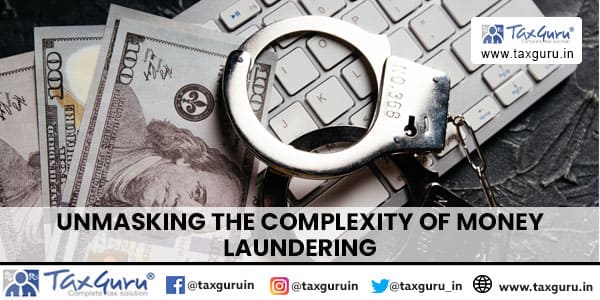Money laundering, act of conversion of illicit funds into legitimate ones is a pervasive threat to the integrity of financial systems worldwide. As we delve into the complexities of this illicit practice, the case of Paytm Bank in India emerges as a striking example, shedding light on how even seemingly secure institutions can become entangled in the web of financial crime.
Imagine a criminal mastermind, with pockets brimming with cash obtained through illegal means like drug trafficking, human exploitation, or corruption. This ‘dirty’ money needs to be cleansed of its illicit origins before it can safely enter the financial mainstream. This is where money laundering comes into play. The journey of illicit funds of money laundering involves three distinct stages: placement, layering, and integration.
1. Placement: This marks the initial deposit of ill-gotten gains into the financial system. Paytm Bank, like many others, became an unwitting facilitator when accounts associated with money laundering activities were used to inject tainted funds into the banking ecosystem.
2. Layering: Once inside the system, the dirty money is subjected to a flurry of transactions, both within and outside the bank, to disguise its origins. Paytm Bank’s woes deepened as it was discovered that these funds were shuffled between multiple accounts, creating a complex structure.
3. Integration: The final stage involves reintroducing the ‘cleaned’ money into the economy through legitimate channels. In the case of Paytm Bank, funds laundered through its accounts found their way into various sectors, from real estate to stocks, blurring the lines between legitimate and illicit wealth.
The rise of digital banking has added a new dimension to the age-old crime of money laundering. Platforms like Paytm offer unparalleled convenience but also present new challenges of oversight and regulation. Criminals exploit this digital landscape to their advantage, using digital transactions to launder money with unprecedented speed and anonymity.
To combat this ever-evolving threat, a multi-pronged strategy is imperative. This includes implementing Know Your Customer (KYC) protocols, enhancing due diligence measures, and implementing real-time transaction monitoring. Collaboration between financial institutions, law enforcement agencies and regulators is paramount to detecting illicit activities.

The Paytm Bank saga serves as a reminder of the urgent need for increased vigilance and regulation in the financial system. It underscores the importance of public awareness and education in combating money laundering. By arming ourselves with knowledge and vigilance, we can fortify the financial system against the insidious threat of money laundering, ensuring a safer and more transparent future for all.
Overall, money laundering is a serious problem that requires a coordinated and comprehensive response. In India, this includes not only strong laws and regulations, but also effective enforcement and international cooperation. By taking these steps, India can work towards a more transparent and accountable financial system, which will benefit everyone.





